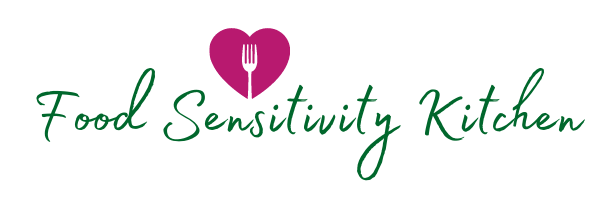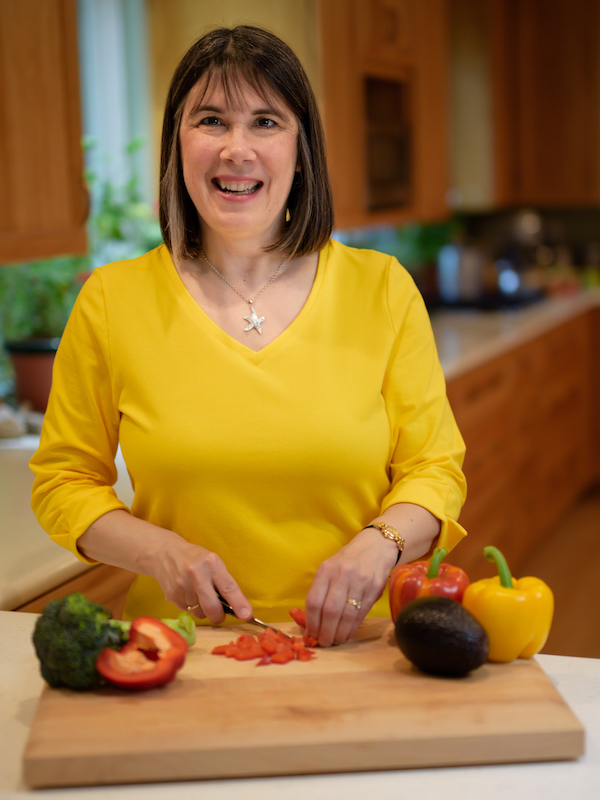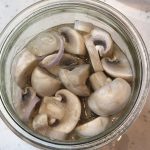
The Cooking Framework Quiz is available by clicking the button below.
Don’t miss an episode!
The button below will take you to Apple Podcasts to subscribe.
Or visit your favorite podcast provider to subscribe.
Thank you!
Here is the transcript of the episode:
Welcome to The Sensitive Kitchen, where home cooks are inspired to “Cook to Enable Those You Love to Flourish.” I’m Cindy Sullivan, registered dietitian, passionate nutrition educator, and accomplished home cook.
Whether you’re changing how you cook for food sensitivities, allergies, intolerances, or just trying to eat healthier on a budget, you’re in the right place. Most episodes, I will share favorite recipes as well as modification, tips and nutrition benefits. Occasionally I’ll have a guest or special episode like modifying holiday favorites. My favorite foods? They’re raspberries and homemade chocolate chip cookies. My latest cooking project was long fermented sourdough bread.
Welcome to the sensitive kitchen podcast. It’s November, and we’re celebrating our one-year anniversary at the podcast. There is a special giveaway for those of you who are listening to this in November, 2021,
You can win one of three different 45 minute consultations with me to talking about solving your challenges, cooking for your food sensitive family. You can receive entries four different ways.
First of all, review the podcast. Send me an email so that I have your email. So I can notify you if you win, because I don’t have your email if you review of the podcast.
Or you can review any recipe you have cooked from Food Sensitivity Kitchen. And the website is foodsensitivitykitchen.com, which is where all the recipes live.
Or, a third way you can win is to have schedule a 15 minute chat with me because I’d like to hear from all of you who are listening to the podcast and who have made some of my recipes. What your biggest challenges are cooking for your food allergic or food sensitive family?
In addition to all those ways, refer a friend. For every friend you refer, who does one of those three things, reviews the podcast, reviews a recipe on my website, or meets with me for15 minutes, you also get another entry. So just send me an email, Let me know who you referred or what you’ve done. And I will enter you to win.
Throughout the month of November this special challenge is going on.
So our topic for today is cranberries. Thanksgiving is coming quickly for many of us, those juicy red berries add a wonderful, sweet tart colorful addition to our meals. I have two very simple cranberry recipes for you today: cranberry sauce and a cranberry relish. But before we talk about them, let’s look at some of the research that has been done on eating cranberries to inspire you to add some cranberries to your holiday plate.
Cranberries contain a variety of bioactive components. Scientists have been studying cranberries beneficial effects on urinary tract health, preventing and/or treating urinary tract infections since the early 20th century – almost a hundred years. And that’s how many of you probably think of cranberries in terms of health benefits.
But in this century, in the 21st century, the protection provided by cranberry phytochemicals, those naturally occurring plant chemicals, against cancer and vascular diseases has drawn a lot of attention from researchers. One paper I read summarize the proceedings of a cranberry health research conference, and it was looking at the impact that cranberries had on your gut microbiome and cardio-metabolic health. They stated that much of the attention regarding the impact of cranberries on the gut microbiota has been directed toward urinary health. However, the focus has expanded in this century to encompass a broader range of cranberries anti-microbial, antifungal, and antiviral actions against nine different types of pathogens that invade your gut, including H. pylori bacteria, which is involved in stomach ulcers and stomach cancer.
Several different cranberry constituents, particularly pro anthrocyanins, flavanols and hydroxy cinnamic acid may act on those pathogens in several different ways. One of those ways includes reducing inflammation rather than actually killing the bacteria. And, you know, inflammation is one of our major causes of disease.
So this expanding body of research includes studies that have been done in test tubes, in live cells, in animals, as well as human studies. So there’s a variety of research that has been done. And in addition to the compounds present in cranberries and cranberry juice, the friendly bacteria that live in your gut may also play a role in transforming those compounds that you eat from cranberries into different and more bioactive and bioavailable compounds. Plus, phytochemicals, specifically polyphenols from cranberries may play a role in stimulating the immune system because of their action on your gut.
In terms of cardiovascular health, in studies with cranberry juice, studies showed that reduced oxidized LDL cholesterol, reduction in LDL cholesterol, and decrease in triglycerides from drinking cranberry juice, Berry fruit polyphenols, which include cranberries have been shown in test tube experiments and in animal models to inhibit carbohydrate digestion in glucose absorption in the intestine.
They’ve also been shown to stimulate insulin excretion from the beta cells in your pancreas, regulate glucose release from the liver, and activate insulin receptors and glucose uptake in insulin sensitive tissues. In other words, they may play a role in regulating blood sugar.
So to summarize that research, the recent growing body of research on cranberries and health is part of emerging evidence of different types of plant polyphenols as protective dietary agents. They act both directly and indirectly via their metabolites and or their reactions with the bacteria that live in your gut.
So how should we eat cranberries to maximize their benefits? Now, many people ask, can I eat these by eating cranberry sauce or an adult cranberry beverage? And the answer is yes, about a half a cup of sauce or half a cup of dried berries, a 10 ounce glass of cranberry juice drink sweetened or unsweetened, but it has to have at least 25% cranberry juice or even certain dried encapsulated supplements will help obtain the benefits. Even a cranberry cocktail can be a health boost as long as there are enough cranberry juice in the drink.
Let’s address the elephant in the room, sugar.
Cranberries are incredibly good for you, but because they are so tart and contain so much less sugar than other fruits, most of us need to sweeten our cranberries in order to enjoy them. I am not going to tell you that sugar is good for you. Most Americans consume way more sugar than is recommended. I know I do.
But when I think about sugar as a dietitian, I like to think about the whole diet and nutrients.
When you use sugar, be sure you obtain nutrients for that sugar.
Fruit is the perfect example of this. You get fiber, water, vitamins, minerals, beneficial phytochemicals when you eat fruit.
Let me give you another example. When my son was little, I struggled to get enough whole grains in his diet. He would eat frosted mini wheats, which are entirely whole grain. It was a good trade off to use part of his sugar allowance to eat those whole grains.
I am not a big fan of most sugar substitutes. Several studies show that sugar substitute such as saccharin, sucralose, Stevia, and other sugar alcohols like xylitol, erythritol, mannitol, have adverse effects on your gut microbiome. Other studies show artificial sweeteners do not actually help with weight loss.
I understand that for some of you, they’re very helpful, but just be careful, eat them in small amounts, just like you would eat regular sugar. When I eat something sweet personally, I use sugar.
Okay. What about “natural sugars”? When people say this most think of honey or maple syrup.
While they both contain trace amounts of nutrients. (and in our household, we adore and use a lot of maple syrup. My husband is sensitive to honey, so we don’t use much honey), but don’t assume that these “natural sugars” are better for you than white sugar. They certainly are not worse, but all of them contain simple carbohydrates, also known as sugar. And by the time they are absorbed into your body, your body cannot tell if the sugar that came from sugar beets, sugar cane, boiled sap from a maple tree or strained and purified nectar gathered from bees. Your body cannot tell where that sugar molecule came from.
Also, just as an aside, do not assume that stevia is less processed than sugar cane or sugar beets, unless you’re growing the plant on your balcony or in your house or your apartment and pulling off the leaves and using those just as leaves to sweeten your beverage or your whatever you’re sweetening with it.
As far as your body is concerned, sugar is sugar. Now I am not encouraging you to eat sugar, but just like with those mini wheats, if sugar allows you to eat amazing for you cranberries, most of you can handle some sugar.
By all means, work on cutting down the sugar in these recipes. I have tried and most, every year I say that’s too much sugar. And I try again and I end up adding more sugar so we can eat it. Contrary to what some claims sugar is not poison. It is a simple carbohydrate your body burns for energy. The main problem is that we eat too much of it and like alcohol, it basically just provides glucose without vitamins, minerals, phytochemicals fiber, and other things your body needs to be healthy.
You can consume a little sugar daily. I encourage you to eat it when you get some nutrients like in cranberry relish or cranberry sauce, instead of just sugar and water in a sugary beverage.
Both of the recipes I’m going to talk about today give you the benefits of whole cranberries. And when analyzing cranberries, one class of compounds, the proanthocyanidins were higher in the skin of cranberries than in the flesh of cranberries and in this cranberry sauce and relish, you’re receiving all the benefits.
So let’s talk about these recipes. They’re actually embarrassingly simple, especially the first one, which is cranberry sauce.
There was a certain point in time when we were avoiding all corn products. And if you look at the label on most prepared cranberry sauces, they contain high-fructose corn syrup. So I used the recipe on the back of the cranberry label to get started. And it has three ingredients, cranberries, water, and sugar. Now for cranberries, you can use fresh or you can use frozen and the results are identical.
To change this up a little bit, you certainly can add things like orange zest or orange juice. You can add cinnamon sticks or whole cloves. I have made it with pomegranate juice. It’s pretty simple to prepare. Basically for either of these recipes, you’re going to put your cranberries (and you do not have to thaw them if they’re frozen) fresh or frozen into a colander, pick them over.
Discard any brown ones or any extremely wrinkled ones. Pick out a new stems that are in there. Rinse the cranberries well.
For the cranberry sauce
Put the cranberries into a pot, add equal amounts of water and sugar. And it will start with, for 12 ounce bag of cranberries, it will start with about a cup of water and a cup of sugar.
If you happen to have a simple sugar solution, one-to-one, already in your household, use it. You’re going to put it into a fairly deep sauce pan because cranberries tend to splatter when they pop. So put it into a deep sauce pan, bring it to a boil stirring occasionally to dissolve the sugar and cook it for about 10 to 15 minutes.
The cranberries will start to pop and you’ll have cranberry sauce. If you want a little thicker cook a little longer, but it will thicken as it cools, put it in a glass container. You certainly can use plastic, but I don’t like to put hot things in plastic and it might stain your plastic containers. So put it in a glass container.
Put it in your fridge and it will keep for several days, actually for a long time, probably a couple of weeks, but ours never lasts that long.
You can also use the leftovers to make a yummy cranberry vinegarette salad dressing. For the cranberry relish, this has four ingredients, cranberries, an apple, an orange, and sugar or some kind of sweetener.
Now for the cranberries, again, you can use fresh or frozen, For the apple, you keep the skin on. And for the orange, you keep the skin on. So rinse them both well. After you’ve washed and picked over the cranberries, put half of them in a food processor bowl. You probably could use a blender, but it’s a lot harder to get out of the blender and to get things uniformly chopped up.
So put half the cranberries into a bowl, cut your apple in half, core your apple, chop the each quarter into about, oh, maybe 12 pieces or so. And cut your orange in half. Keep the peel on the orange, cut each half of the orange into about 12 pieces or so.
Put half the apple, half the orange, half the cranberries in your food processor. Now you can either add half of the sugar at this time, or you can wait and add all the sugar after everything’s been ground up. The sugar does help it to grind [sort of] more evenly, but at the same time, if you have a new food processor, it also tends to scratch the sides of your bowl. So you weigh what you want to do.
I do it both ways with great success. So chop. I usually pulse it a few times, scraped down the edges into my food processor until it’s a small chop. You don’t want to puree, but you don’t want big chunks in it either. Take that half out of your food processor, put it in a glass bowl. Process the other half of the orange, the apple, and the cranberries. Put them all together. Add your sugar or other sweetener.
Let it sit overnight. If you’re using a granulated sugar, you will for sure want to let it sit overnight so the sugar has a chance to dissolve.
It will last a long time in your refrigerator, but it does not last very long in our house because we all love it.
This one will not last quite as long as the other one, because it’s not cooked and you also have a raw apple in here, but the apple doesn’t turn brown because there’s so much acid from the cranberries and it’s ground finely. So it lasts a long time. Another use for this, I make a delicious chopped apple nut salad that uses cranberry relish and yogurt, plain yogurt, for a dressing. And it is yummy.
I hope you have a wonderful Thanksgiving that you have good time with people who are dear to you, whether they’re family or friends. Include some cranberries in your diet, they are amazingly good for you. Have a wonderful Thanksgiving. Don’t forget to enter the contest and have a chance to win one of three consultations with me to celebrate the one year anniversary.
As always the recipes with all the amounts and pictures are at my website, FoodSensitivityKitchen.com/episod 038, the 38th episode of The Sensitive Kitchen podcast.
Keep Cooking to Enable Those You Love to Flourish. Have a wonderful day. Thanks for joining me. Bye-bye.
References:
1. Impact of Cranberries on Gut Microbiota and Cardiometabolic Health: Proceedings of the Cranberry Health Research Conference 2015
Jeffrey B Blumberg, Arpita Basu, Christian G Krueger, Mary Ann Lila, Catherine C Neto, Janet A Novotny, Jess D Reed, Ana Rodriguez-Mateos, Cheryl D Toner Author Notes
Advances in Nutrition, Volume 7, Issue 4, July 2016, Pages 759S–770S, https://doi.org/10.3945/an.116.012583
Published: 11 July 2016
2. Mini-review American cranberries and health benefits – an evolving story of 25 years Shaomin Zhao, Haiyan Liu, Liwei Gu
First published: 09 January 2018 https://doi.org/10.1002/jsfa.8882Citations: 9
3. Review: Bioactive compounds in cranberries and their role in prevention of urinary tract infections Amy B. Howell First published: 29 May 2007 https://doi.org/10.1002/mnfr.200700038 Volume51, Issue6
Special Issue: Berry Fruits June 2007 Pages 732-737
4. Effects of Sweeteners on the Gut Microbiota: A Review of Experimental Studies and Clinical Trials
Adv Nutr. 2019 Jan; 10(Suppl 1): S31–S48. Published online 2019 Feb 5. doi: 10.1093/advances/nmy037
Francisco Javier Ruiz-Ojeda,1,2,4 Julio Plaza-Díaz,1,2,4 Maria Jose Sáez-Lara,2,3 and Angel Gil1,2,4,5
5. https://www.ncbi.nlm.nih.gov/pmc/articles/PMC6363527/
6.NIH National Center for Coplementary and Integrative Health: Cranberry
https://www.nccih.nih.gov/health/cranberry
7. Medical News Today What to know about cranberries
https://www.medicalnewstoday.com/articles/269142#benefits
8.Cranberries: ASN Journals Examine a Thanksgiving Favorite November 12, 2020 by Eric Graber
https://nutrition.org/cranberries-asn-journals-examine-a-thanksgiving-favorite/
9. Excellent short summary article: Rutgers Researcher Discusses the Health Benefits of Cranberries
https://www.rutgers.edu/news/rutgers-researcher-discusses-health-benefits-cranberries
9.All About the Nutrition and Calories in Honey vs. Sugar
By Kim Ford Updated March 19, 2021
https://www.livestrong.com/article/316246-calories-in-honey-vs-sugar/




